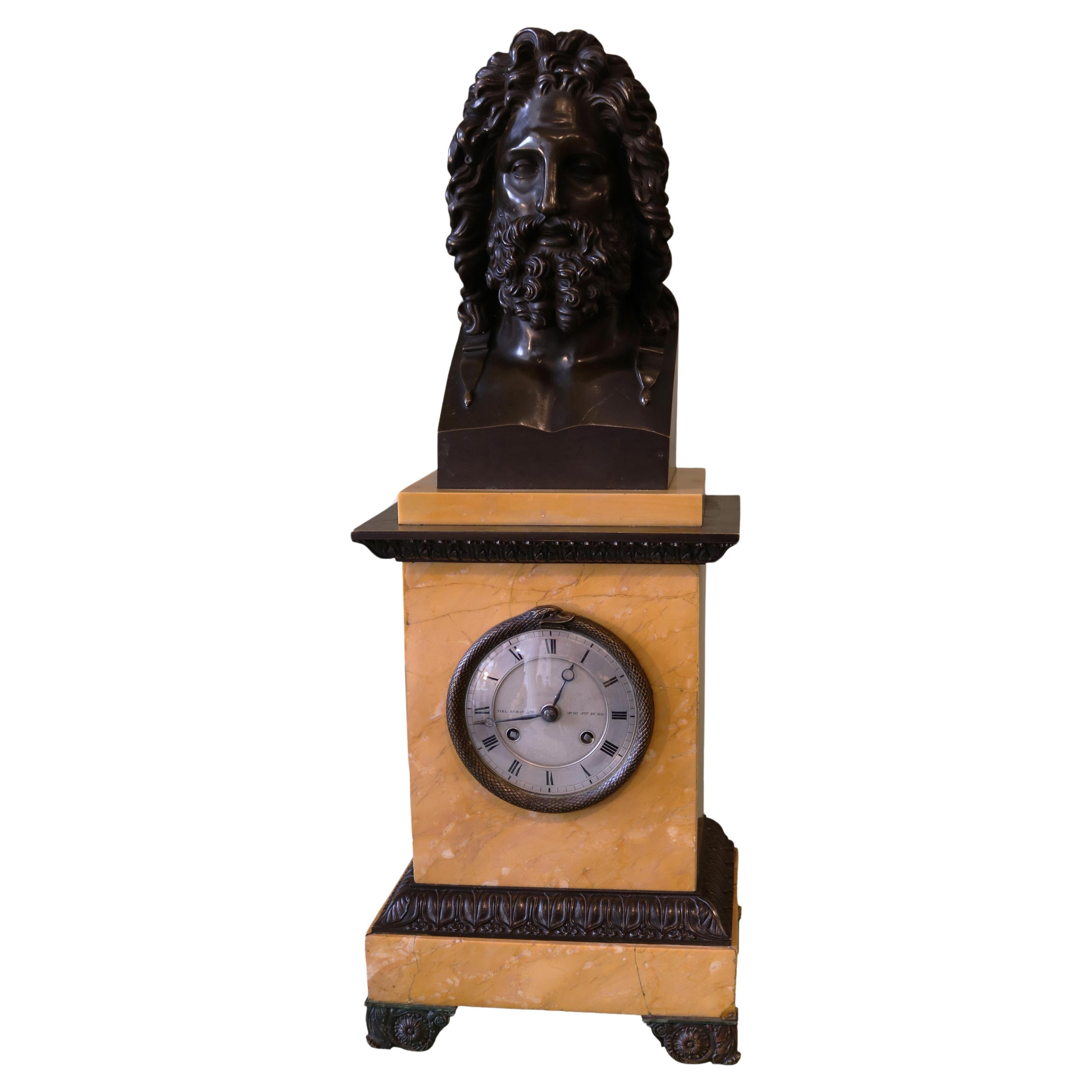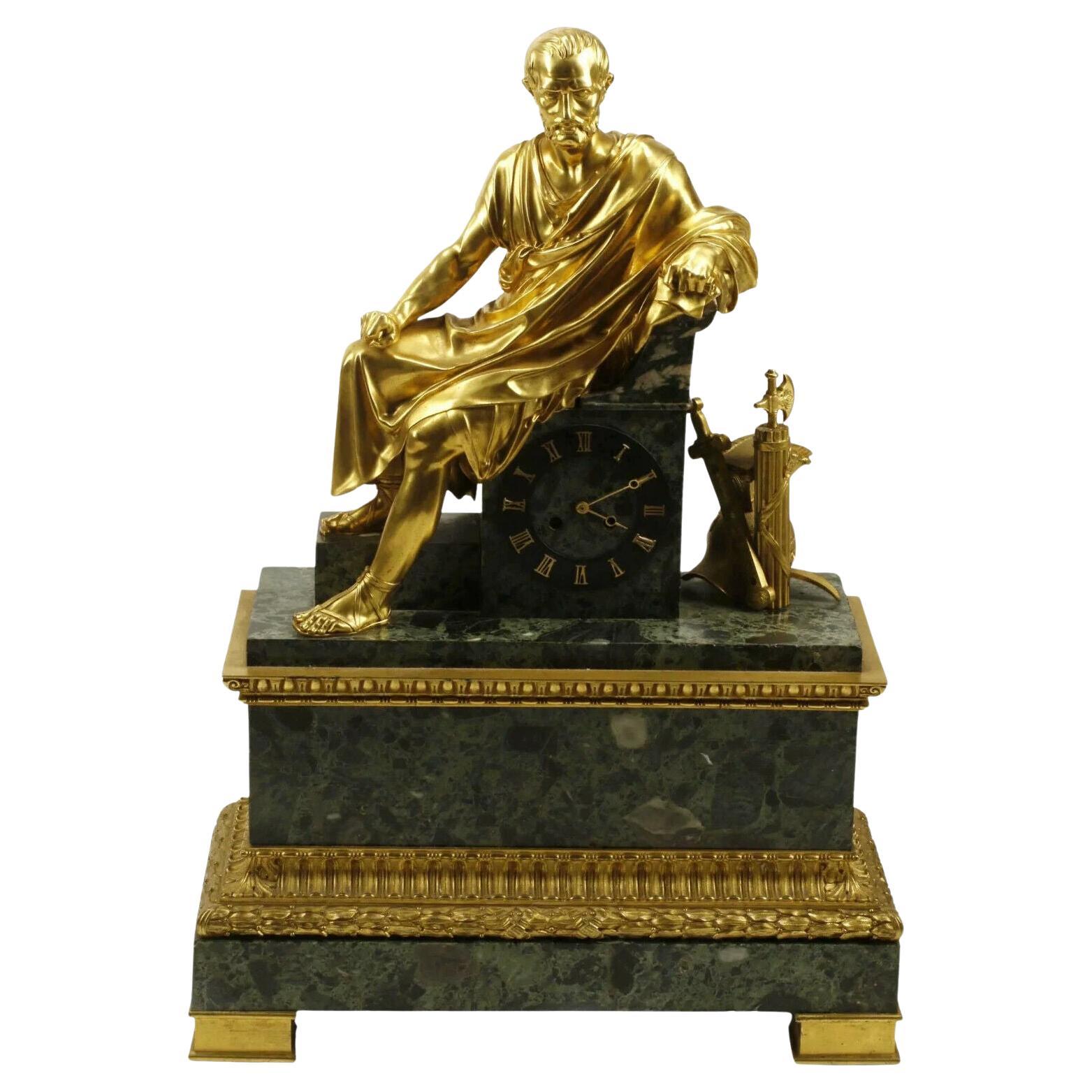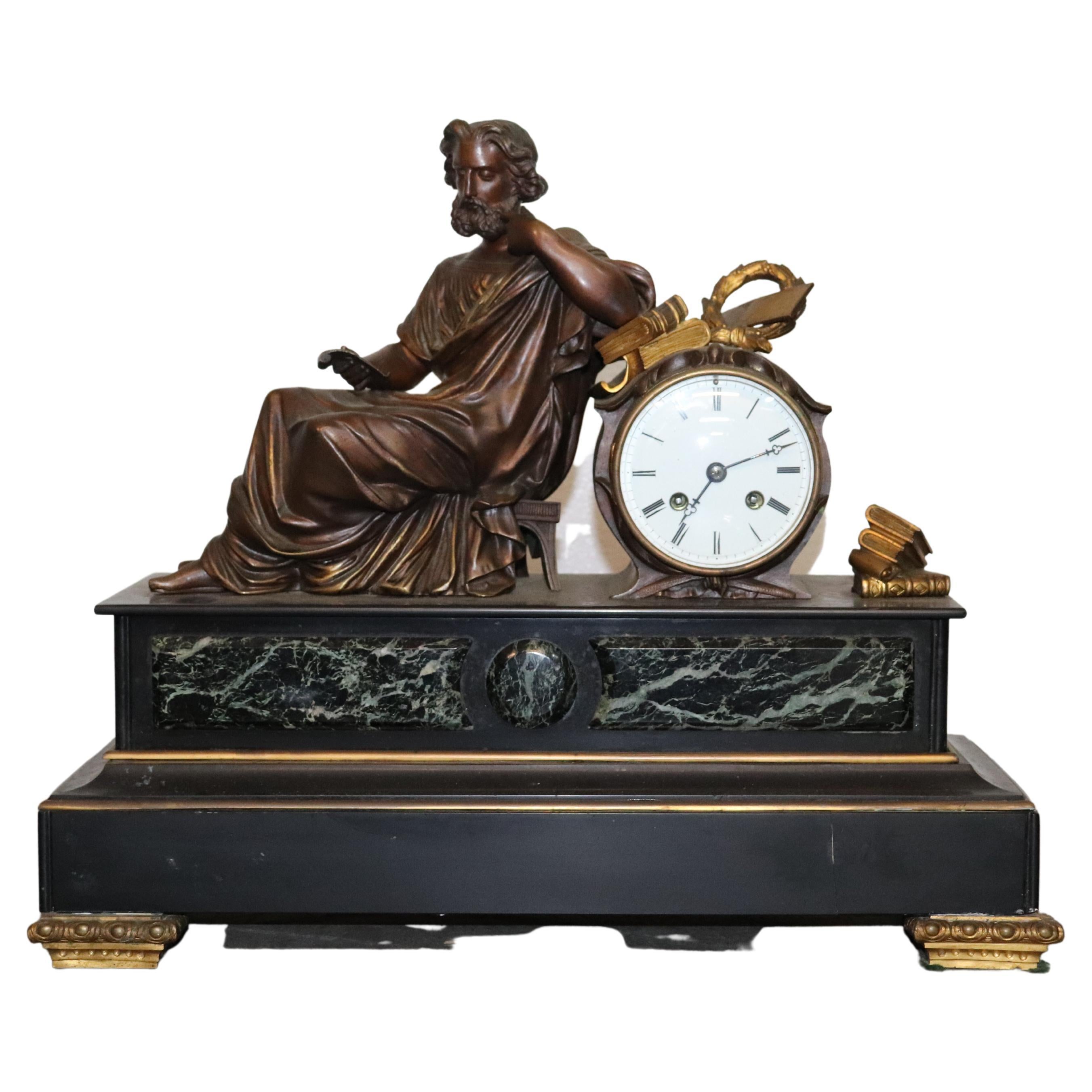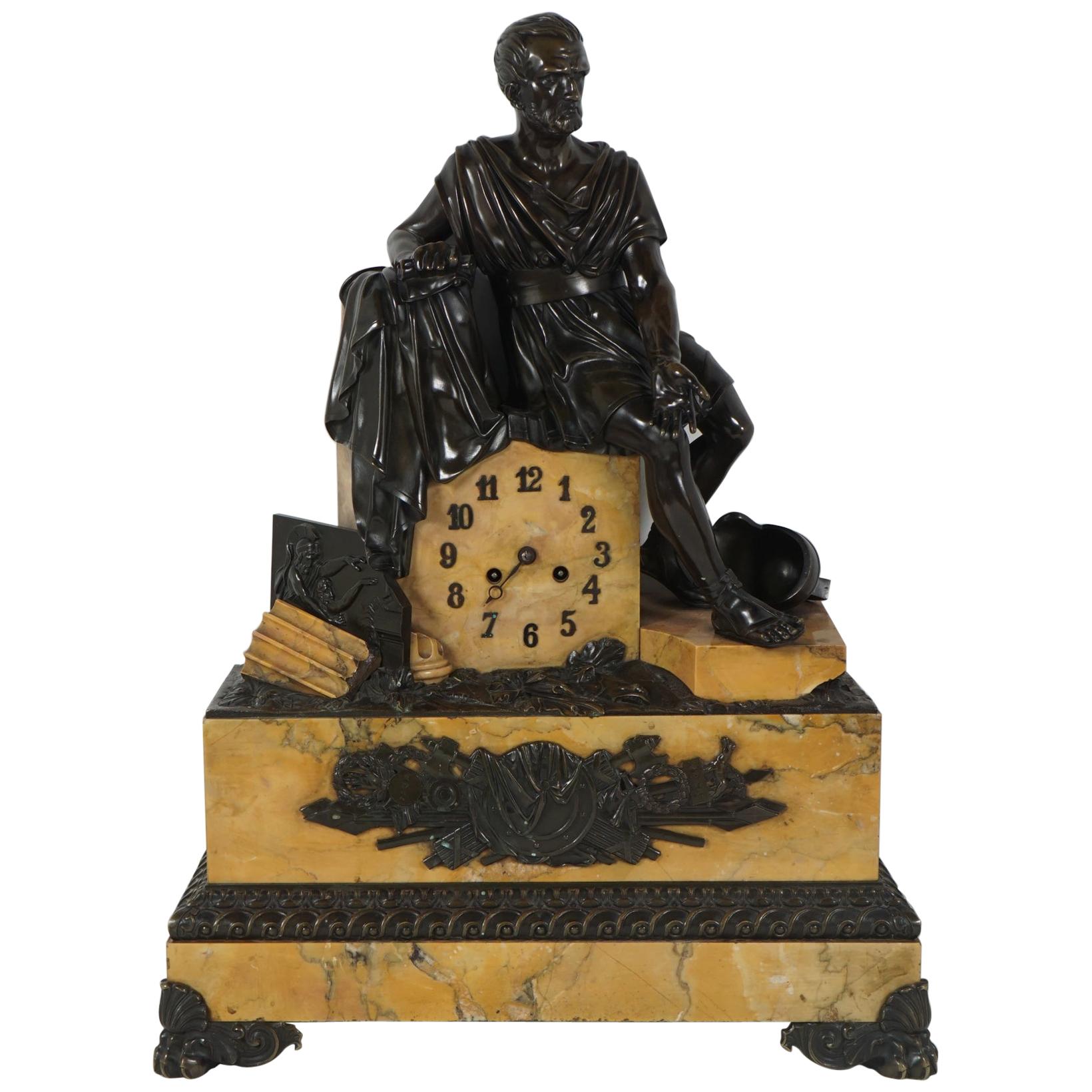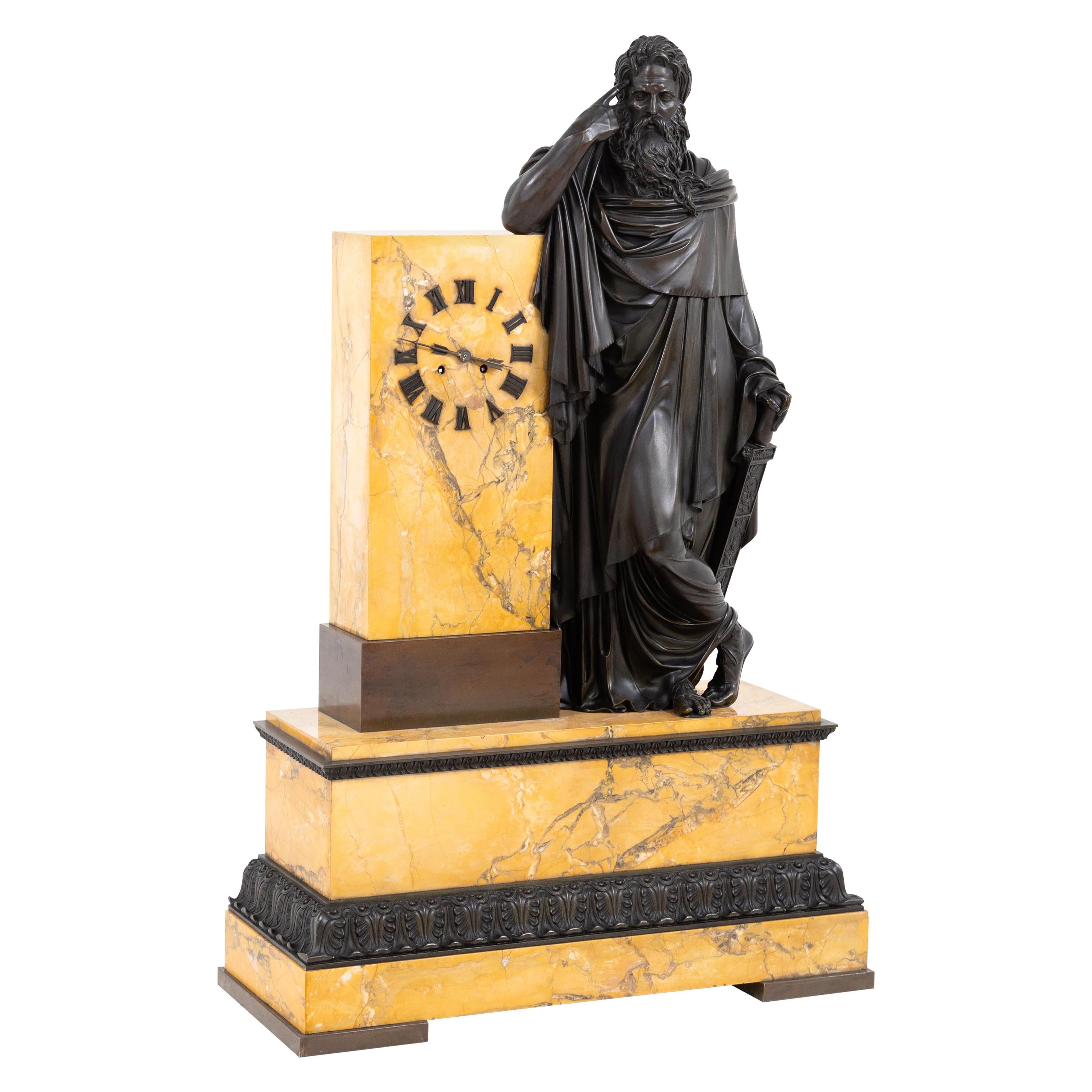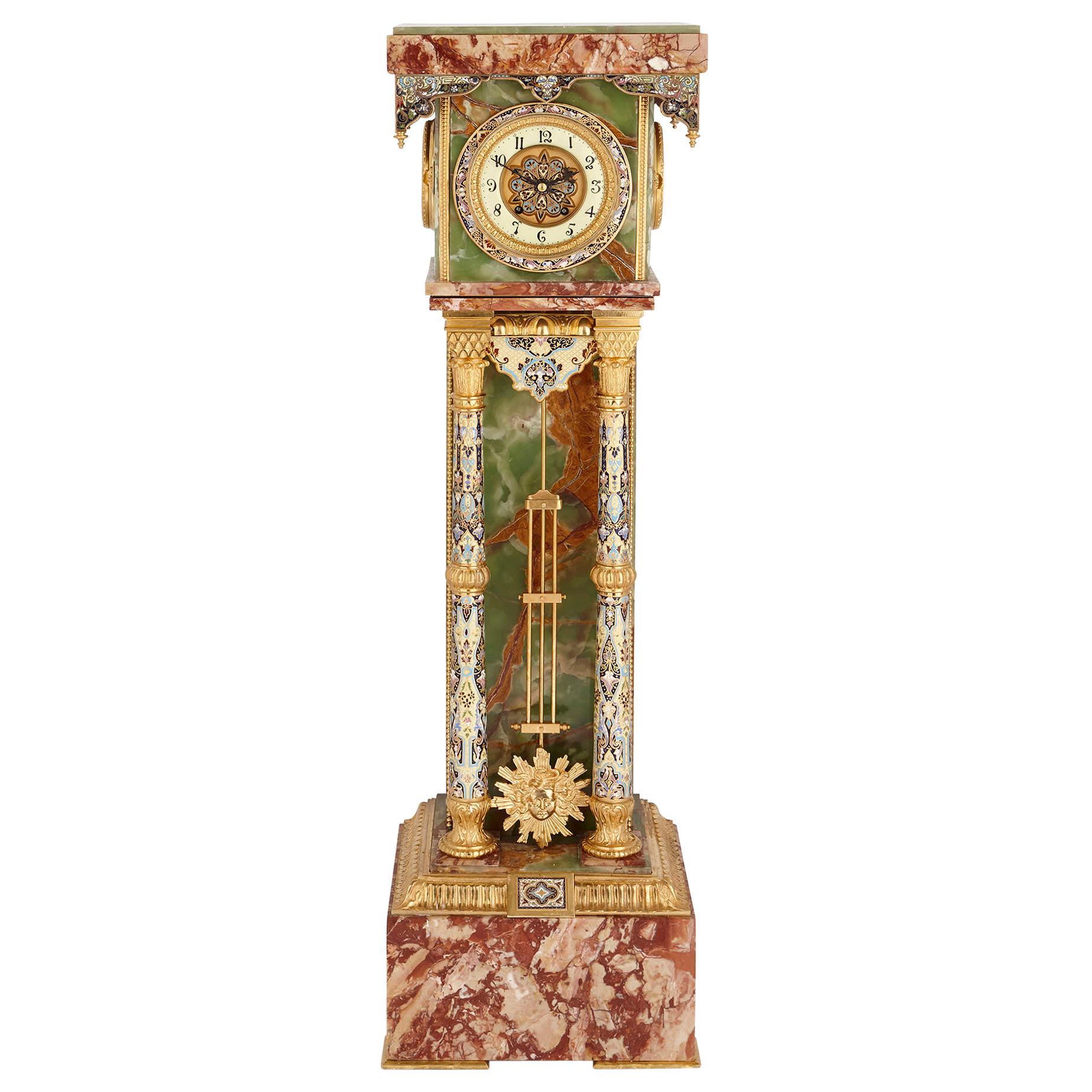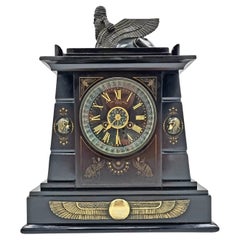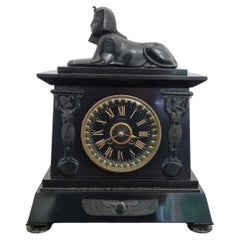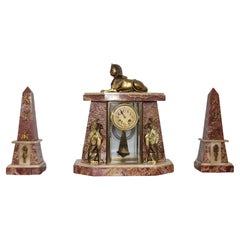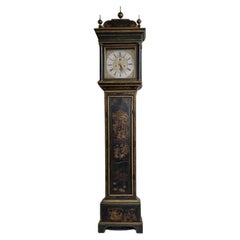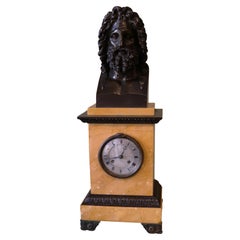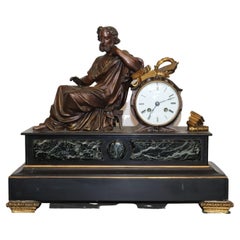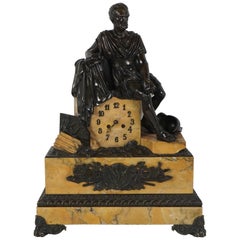Items Similar to 19th Century Onyx and Bronze Clock with William Shakespeare
Want more images or videos?
Request additional images or videos from the seller
1 of 12
19th Century Onyx and Bronze Clock with William Shakespeare
$3,338.06
£2,500
€2,892.90
CA$4,703.48
A$5,178.98
CHF 2,685.53
MX$61,333.39
NOK 34,091.07
SEK 31,861.96
DKK 21,606.51
About the Item
A William Shakespeare Gothic revival mantle clock, dating back to the mid-19th century, superb quality and is made from onyx and gilt bronze. The clock showcases reeded column supports and classical friezes adorned with exquisitely detailed scenes from Shakespeare's play Julius Caesar.
The dial of the clock is designed in the style of a Gothic cathedral, adding a touch of architectural grandeur. It is also adorned with a beautifully detailed bust of William Shakespeare, emphasizing the clock's tribute to the renowned playwright.
Furthermore, the clock is equipped with an eight-day striking movement that will be professionally serviced before dispatch.
High: 55.5 cm
Width: 32 cm
Depth: 16 cm
- Dimensions:Height: 21.86 in (55.5 cm)Width: 12.6 in (32 cm)Depth: 6.3 in (16 cm)
- Style:Gothic Revival (Of the Period)
- Materials and Techniques:
- Place of Origin:
- Period:
- Date of Manufacture:Mid-19th Century
- Condition:Wear consistent with age and use. In good, antique condition with usual signs of age and use as to be expected.
- Seller Location:Hoddesdon, GB
- Reference Number:1stDibs: LU9494239323962
About the Seller
5.0
Vetted Professional Seller
Every seller passes strict standards for authenticity and reliability
Established in 1987
1stDibs seller since 2023
16 sales on 1stDibs
- ShippingRetrieving quote...Shipping from: Hoddesdon, United Kingdom
- Return Policy
More From This Seller
View All19th Century Egyptian Revival Clock by Hamilton and Inches
Located in Hoddesdon, GB
An Egyptian Revival Black Marble Clock
Circa 1860s made by the renowned clock and jewellery makers Hamilton and Inches of Edinburgh with Royal ...
Category
Antique Mid-19th Century Scottish Egyptian Revival Mantel Clocks
Materials
Bronze
19th Century Egyptian Revival Mantel Clock by D. Munsey of Cambridge
Located in Hoddesdon, GB
A fine Egyptian Revival mantel clock retailed by D. Munsey of Cambridge, circa 1880s, black marble and slate clock case with elaborate bronze mounts.
The architectural case is surmo...
Category
Antique 19th Century British Egyptian Revival Mantel Clocks
Materials
Belgian Black Marble, Slate, Bronze
Art Deco Egyptian Revival Clock Set with Pair of Obelisks
Located in Hoddesdon, GB
A stylish Art Deco Egyptian Revival clock set featuring a central timepiece flanked by a pair of obelisks, this piece exudes the grandeur and mystique of the early 20th-century fasci...
Category
Early 20th Century French Art Deco Mantel Clocks
Materials
Marble, Bronze
18th Century Lacquered Japanned Longcase Clock from London
Located in Hoddesdon, GB
A superb mid 18th-century London longcase clock, finished in green japanned lacquer with gilt scenes of figures, pagodas, and landscapes. The clock features a silvered brass dial wit...
Category
Antique Mid-18th Century British Georgian Grandfather Clocks and Longcas...
Materials
Oak, Lacquer, Paint
Art Deco Bronze Clock Garniture Set "Patience" by Suzanne Bizard Circa 1925
By Susanne Bizard
Located in Hoddesdon, GB
Introducing "Patience," a captivating Early Art Deco figural clock garniture set, made by the a renowned sculptor of the Art Deco era, Suzanne Bizard.
Exquisite clock features a be...
Category
Vintage 1920s French Art Deco Mantel Clocks
Materials
Marble, Bronze
Art Deco Clock with Lamp - Water Carrier Sculpture / Illuminated Nude with Vase
Located in Hoddesdon, GB
A spectacular Art Deco illuminated clock featuring a sculpture of the water carrier / Nude with Vase.
The exquisite geometric design of the clock c...
Category
Antique 1830s French Art Deco Mantel Clocks
Materials
Alabaster, Marble, Spelter
You May Also Like
Antique early 19th century French bronze and Sienna marble mantle clock
Located in London, GB
A large and impressive early 19th Century French bronze & Sienna marble Clock surmounted with well-cast bust of Jupiter. The Clock, having 8-day s...
Category
Antique Early 19th Century French Empire Mantel Clocks
Materials
Marble, Bronze
1800's French, Mantel, Large, Empire Style Bronze & Marble Antique Clock
Located in Austin, TX
Stunning Antique Clock, French, Mantel, Large, Empire Style Bronze & Marble Clock, 1800's, 19th Century!
This stunning antique clock is a beautiful addition to any home or office. W...
Category
Antique 19th Century French Other Mantel Clocks
Materials
Marble
Fine French Verdi Marble and Bronze Mantel Clock of an Enrobed Wise Old Scholar
Located in Swedesboro, NJ
This fine French Verdi marble and bronze mantel clock, circa late 19th century, is a remarkable example of neoclassical artistry and precision timekeeping. The piece features a beaut...
Category
Vintage 1920s French Neoclassical Revival Mantel Clocks
Materials
Marble, Slate, Bronze
$1,960 Sale Price
20% Off
Charles X Period Bronze and Sienna Marble Clock
Located in Hudson, NY
This large and impressive clock was made in France, circa 1830. Composed as an allegorical statement of the classical past the bronze work is of the finest quality. Cast in many sepa...
Category
Antique Mid-19th Century French Charles X Mantel Clocks
Materials
Marble, Bronze
Bronze Mantel Clock, Restauration Period France, Movement Dated 1827
Located in Greding, DE
The large pendulum on a Sienese marble base with patinated bronze frieze as well as large fully sculpted depiction of a bearded man with the index finger at his temple. The other han...
Category
Antique 19th Century French Restauration Mantel Clocks
Materials
Bronze
Onyx, Marble, Gilt Bronze and Champlevé Enamel Pedestal Clock
Located in London, GB
This colorful pedestal clock has been crafted from fine red marble and green onyx, and beautifully decorated with gilt bronze (ormolu) and champlevé enamel. While a popular crafts material in ancient times, onyx was largely forgotten about until its rediscovery in the mid-19th century in Algeria by a French marble-worker called Delmonte. Onyx became highly fashionable in France following this discovery, and it was used to create a variety of decorative art objects.
The clock features a green onyx cube-shaped case, which is surmounted by a slightly projecting red marble top. This top is fringed with champlevé enamel drapery-like motifs, with gilt bronze drop-finials. The case is mounted on its front with a circular dial, which features a central floral champlevé enamel motif, encircled by black Arabic Numerals. This dial is set within a gilt bronze egg-and-dart and champlevé enamel bezel. The sides of the case are mounted with circular gilt bronze barometers...
Category
Antique Late 19th Century French Neoclassical Grandfather Clocks and Lon...
Materials
Onyx, Marble, Bronze, Enamel, Ormolu
More Ways To Browse
Shakespeare Antique
Gothic Cathedral
Julius Caesar
Classical Frieze
William French Furniture
French Onyx Clocks
Antique Clock Columns
Column Clock
Gothic Clocks
Antique Gothic Clock
Antique Onyx Mantel Clocks
Onyx 19th Century French Mantel Clock
Shakespeare Bust
Shakespeare Bronze
Caesar Clock
Shakespeare Clock
Cherub Cloud
Bronze Dore Clock
